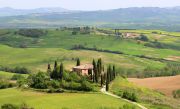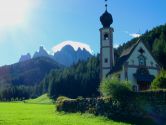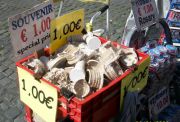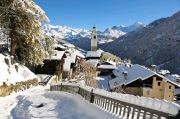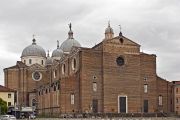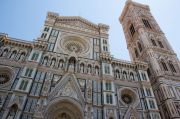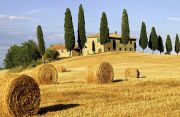The Dolomites – the alpine heart of Italy
The Dolomites in Italy is a Tyrolean fairy tale in which even adults believe. However, let’s start with some bare statistics. The picturesque 150-kilometer long massif is located in the north-eastern part of Italy. Its highest peak is Marmolada, a mountain that rises over 3300 meters above sea level. The other 18 points are slightly lower, but their height still exceeds 3000 meters.
History of the Italian Alps: from the seabed to the modern name
A long time ago (so long ago that it is difficult even to imagine it), several millions of years ago, a real sea was swashing in the territory of modern cliffs and rocks. Obviously, the water disappeared over time, otherwise, our story would not have existed. Scientists have an explanation for this: Africa, located at a considerable distance from Europe, began to move to the north at some point. The water slowly went away, exposing the Alps and the area of the modern Euro-Mediterranean region. The traces of coral reefs, found by geologists high in the mountains, prove that the Dolomites were once a seabed.
The name of the mountains derives from the name of the French scientist – Deodat de Dolomieu. In the 18th century, he was the first one who explored this alpine region and discovered that the mountains consist of limestones and another type of stone previously unknown to the scientific community. This rock, first described by Dolomieu, was later named after the geologist – dolomite, and the mountains – the Dolomites, respectively.
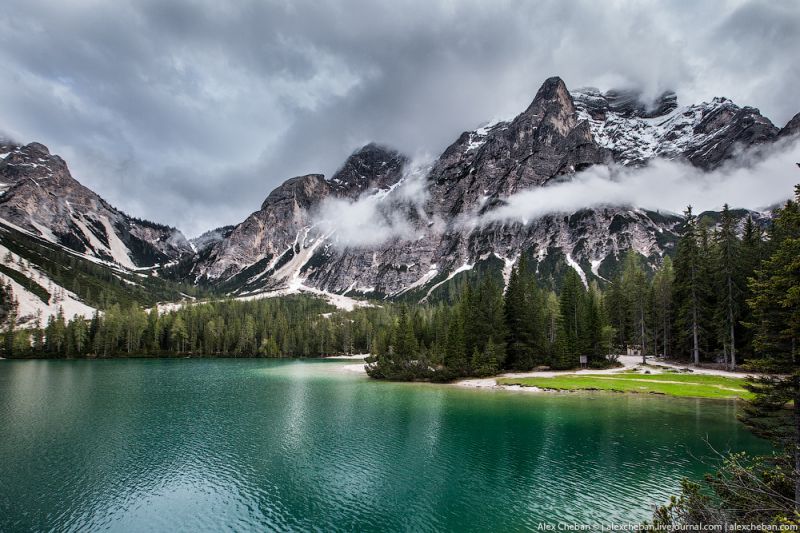 The Pragser Wildsee in the Dolomites. Photo made by Alex Cheban.
The Pragser Wildsee in the Dolomites. Photo made by Alex Cheban.
But this is not the only name that was given to the massif. It used to be called Monti Pallidi. The origin of this name is explained by a beautiful legend. A prince once lived in the alpine lands who fell in love with the unearthly beautiful moon princess. His love was so strong that he could not imagine life without her which made him marry the pretty lady. But the princess did not enjoy the earthly life. The monarch became sick, she withered more and more every day. And all because the woman really missed her dear moon mountains. The gnomes came to her aid: they weaved a blanket of the Moon threads and covered the mountains with it. As a result, the Dolomites obtained their milky-gray color. And what about the princess? She, of course, recovered and lived a long and happy life with the prince.
Despite the uniqueness and simply the beauty of the Dolomites, they were officially recognized relatively recently – UNESCO listed them as a World Heritage site in 2009.
Inhabitants of the Dolomites
Flora and fauna
The lower mountain levels are covered with pine and deciduous forests: age-old pines, larch, fir, mighty oaks, birch, willow, ash, hornbeam, maple. However, mountain meadows are the major part of the Dolomites’ greenery.
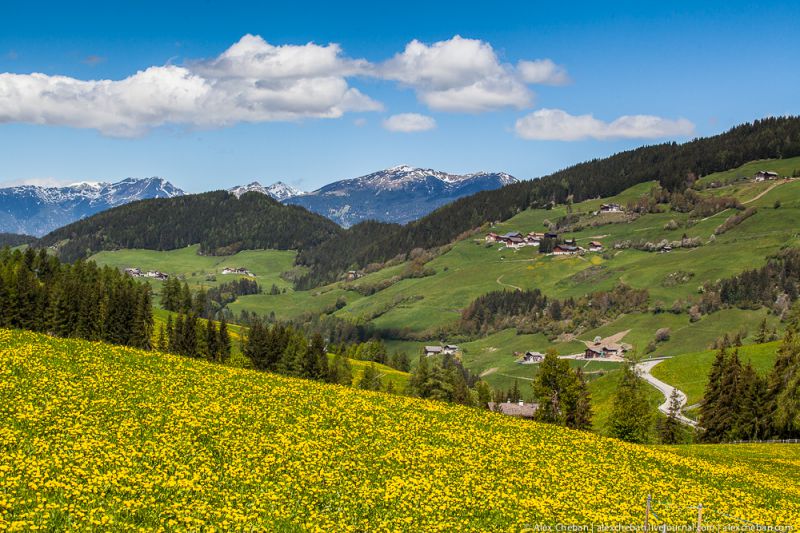 Santa Maddalena, the Funes Valley, South Tyrol. Photo made by Alex Cheban.
Santa Maddalena, the Funes Valley, South Tyrol. Photo made by Alex Cheban.
Animals, such as marmots, mountain goats, chamois, can be found here as they belong to the local fauna. Especially "lucky" tourists can meet a brown bear, he likes to eat trout which swims in local mountain rivers. A lot of small furry creatures live here as well, these include squirrels, martens, hares, ferrets. Eagles proudly hover over the mountains. The crowns of the trees were chosen by crows, owls, and woodpeckers, and partridges and wood grouse nest in the thick meadow grass. In the summer you can also encounter an equally high number of butterflies on the green alpine expanses among numerous wildflowers.
Indigenous people
However, local residents are of special interest. Although this people lives in the territory of Italy, it does not consider itself to be Italian. It also does not identify itself with the neighboring Austrians. A small, but proud mountain community is called the Ladins. A legend has it that good spirits – Silvani – once inhabited the land.
The locals speak in their own Ladin language, as well as in a bizarre mix of Italian and German dialects, but this is such a mix that neither Italian native speakers nor German one can understand it. They have their own traditions and, of course, food and drinks which offer tourists at local festivals every year.
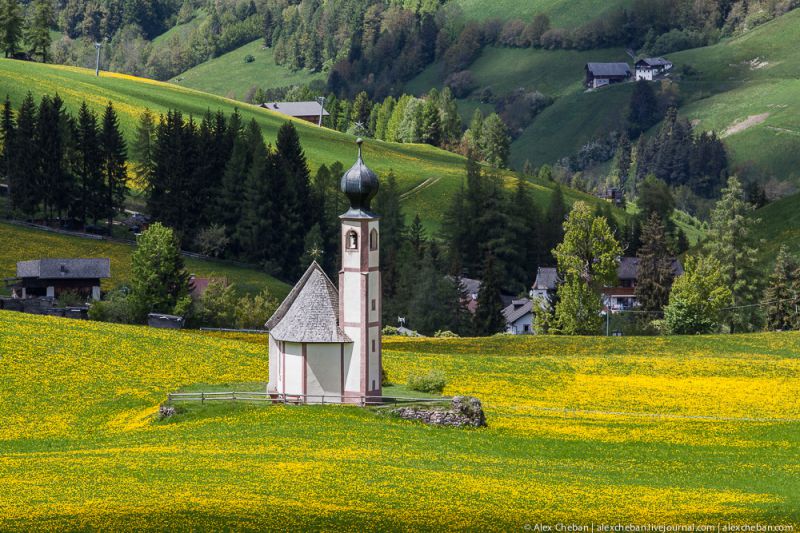 Santa Maddalena, the Funes Valley, South Tyrol. Photo made by Alex Cheban.
Santa Maddalena, the Funes Valley, South Tyrol. Photo made by Alex Cheban.
Italian Alps during winter
In winter, the Italian Dolomites boast pleasant weather (except for some days in January and February when the thermometer shows –20). The temperature remains within 0 ... –5 degrees Celsius, low humidity makes stay in mountains comfortable even at lower points on the thermometer. The sun in Italy shines almost every day, for 7 hours at some resorts.
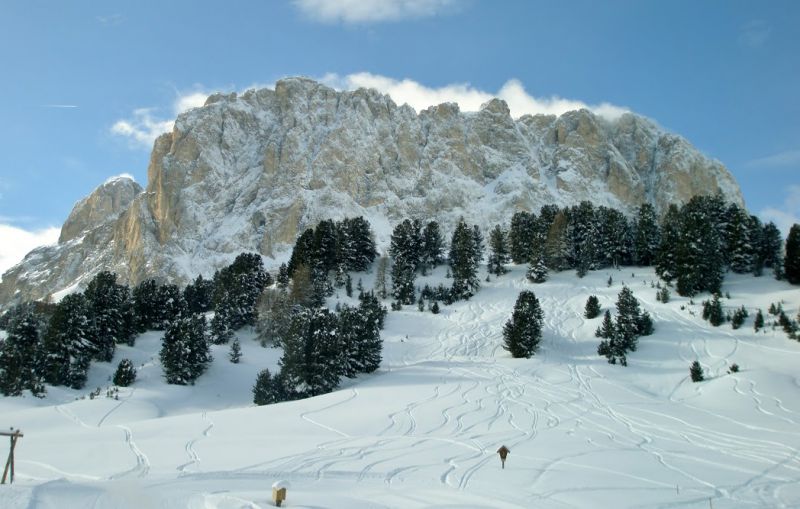 Photo made by IGotoWorld Photo Group.
Photo made by IGotoWorld Photo Group.
Wintertime leisure activities – that’s what brings tourists to the mountains. The Italians did the best they could to ensure that the rest at the ski resorts is comfortable. They began with merging popular resorts into the "carousel" of Sellaronda and ended with the introduction of a single subscription for an easy "round-the-world trip" around the Sella massif. But even if you choose quiet, not as advertised locations, simple ski stations (where mainly locals spend their time), then you will still have the benefits of civilization.
And now IGotoWorld will introduce you more closely to the resorts of the Dolomites. We tried to guess your preferences, but the prudent Italians made sure that you always found what you are looking for in their country. There are lots of options: it is difficult to say the exact number of resorts, but it is possible to take a rough guess – around 50.
Alpine Classics
Famous resorts of the Dolomites:
- The Fassa Valley (center of the Dolomites, this territory is protected by UNESCO).
- Bolzano (the capital of South Tyrol, the Dolomites’ gate).
- Folgaria Lavarone (one of the top Italian ski resorts by size, beauty, and infrastructure).
- Monte Bondone (listed as the oldest European ski resorts).
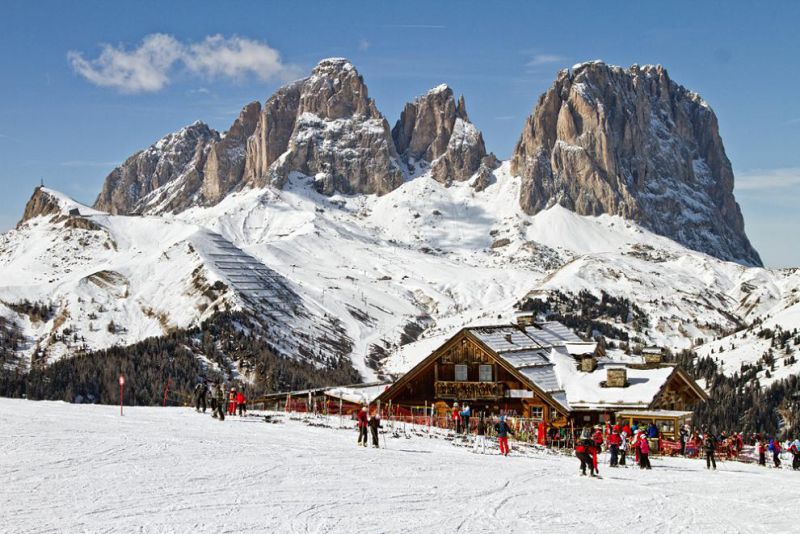 Val di Fassa. Photo source: turpogoda.ru.
Val di Fassa. Photo source: turpogoda.ru.
Once you’re in one of these places, purchase a subscription called "Dolomiti Superski". You can easily use 450 (!) lifts at 12 resorts with it.
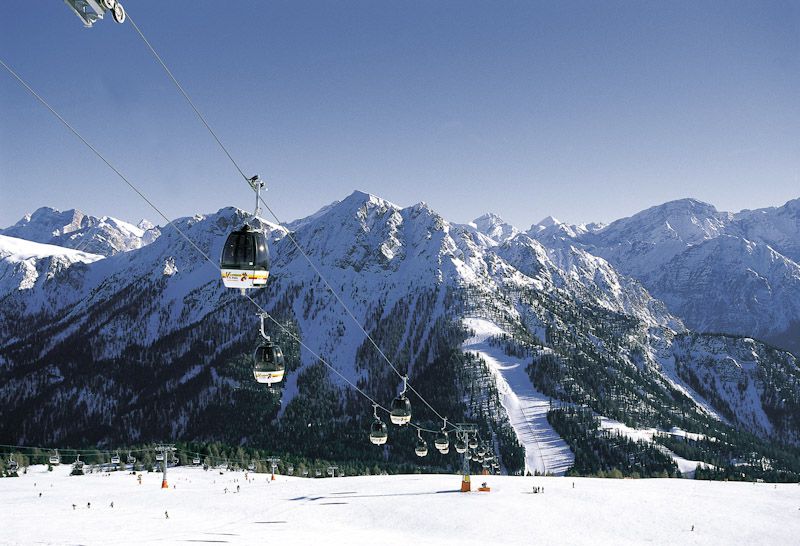 Photo source: skisport.ru.
Photo source: skisport.ru.
Trails of 4 famous resorts (Arabba, Val Gardena, Sappada, Val di Fassa) are located around the Sella massif, that’s why this route is often called a carousel of Sella Ronda, and the traveling through it – a round-the-world trip. Moreover, ski buses run between these and other resorts regularly (of course, if the weather is good enough).
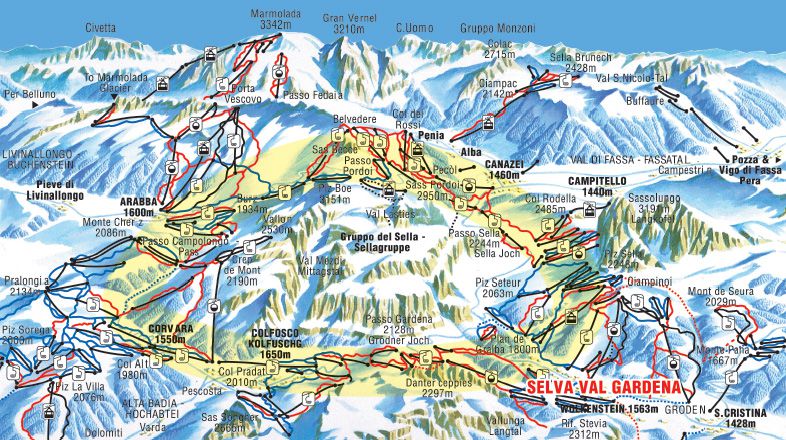 Photo source: twlwanpd.appspot.com.
Photo source: twlwanpd.appspot.com.
For professional athletes and extreme sports fans
There are many "red" and "black" tracks, as well as places for freeriding in the resort of Arabba and the young Kronplatz. The Fassa Valley (resorts of Canazei and Campitello) does not lag behind in this regard as well, the peak of Champak can be found here, which every self-respecting mountain skier must conquer. Alta Valtellina is considered to be the sportiest resort, it is suitable for perfecting skills for two reasons: firstly, the local mountains are the highest, and secondly, the local prices are one of the lowest.
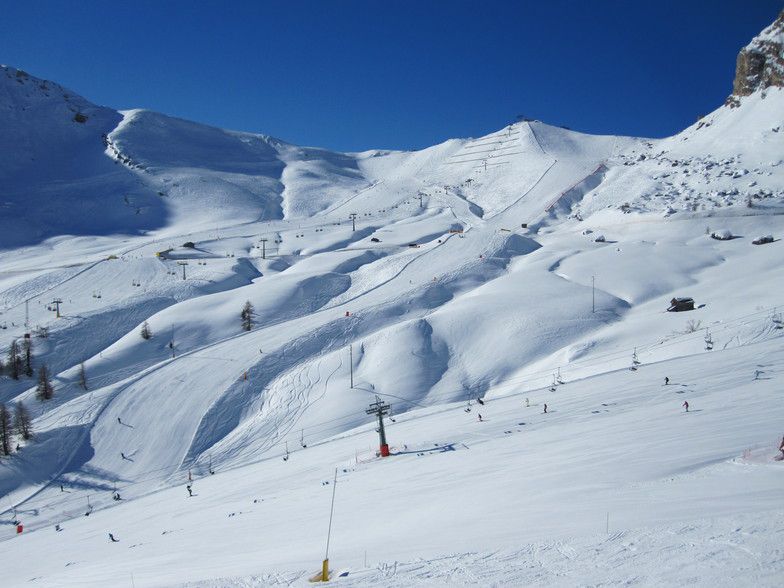 Arabba. Photo source: skirest.com.
Arabba. Photo source: skirest.com.
For a quality family time
Val Gardena is ideal for holidays with children. Moderate elevations, gentle slopes, and mild climate are typical for the resorts of the Fassa Valley. There are also lots of safe trails for toddlers on the Fiemme Valley and Trevalli.
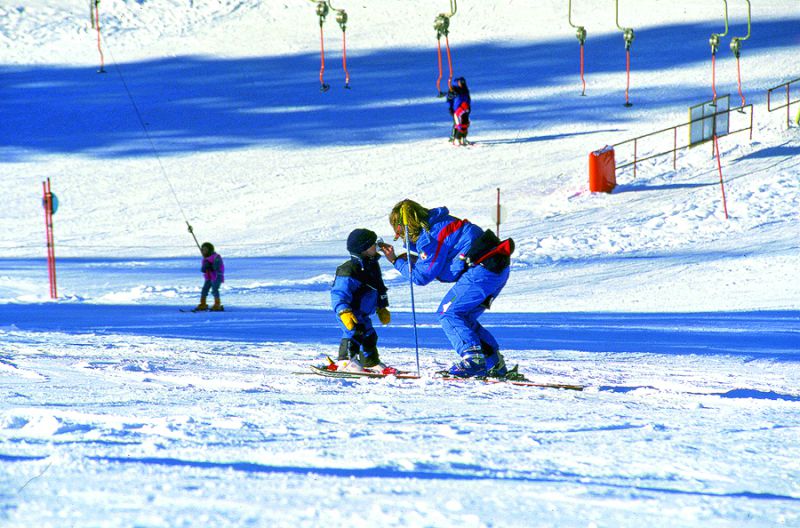 Val Gardena. Photo source: yapokupayu.ru.
Val Gardena. Photo source: yapokupayu.ru.
For those who love luxury, class and bohemian relaxation
Cortina d'Ampezzo is the most elite tourist center of the Dolomites. Here you can immerse in an atmosphere of opulence and fanciness. Sometimes it seems that people come here not to ski, but to show off expensive cars, furs, leather shoes and boots and suits made by famous couturiers. If you have something to impress the refined local public with – this is the place for you.
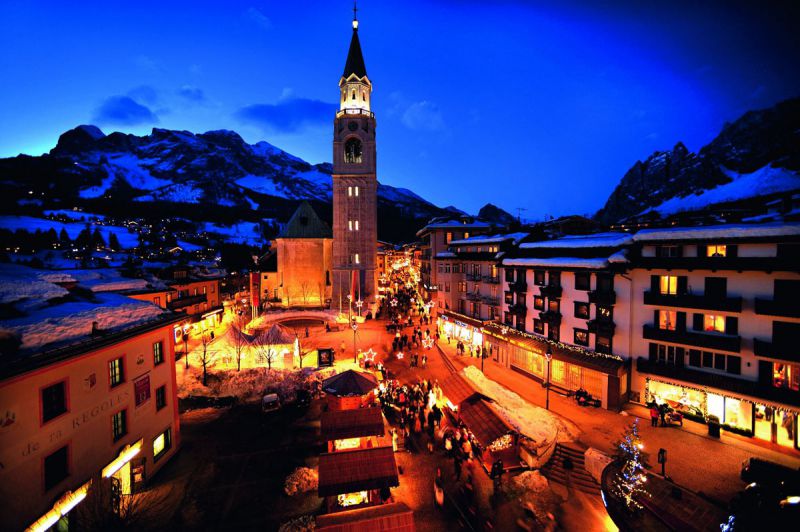 Photo source: bl.com.ua.
Photo source: bl.com.ua.
For inexperienced skiers and those with fear of heights
The ski routes can be found around Val Gardena, Civette, Kronplatz and Arabba. If you still want to slide down the mountain, then go to the resorts with "green" and "blue" trails like at Val di Fiemme, Trevalli – the slopes here are easy and wide.
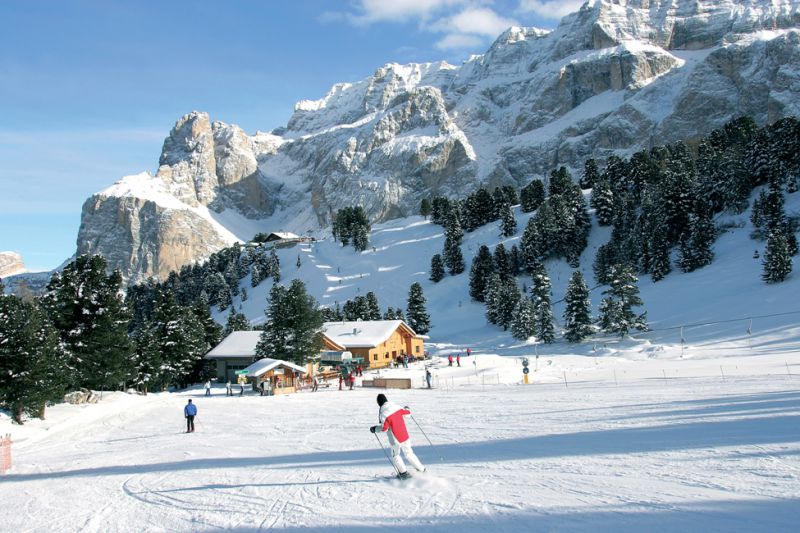 Val di Fiemme. Photo source: worlds.ru.
Val di Fiemme. Photo source: worlds.ru.
For those who do not like skiing
There is a huge ice rink on Val Gardena. You can engage in various activities at the resorts of Kronplatz and Cortina d'Ampezzo that include "snow" in their words: -tubing, -rafting, -boarding. At Cortina d'Ampezzo there are also tracks for bobsled, the Olympic Ice Palace is situated here after all.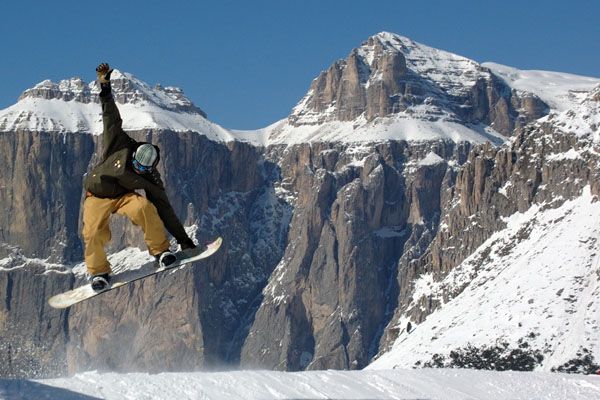 Photo source: tez-travel.com.
Photo source: tez-travel.com.
For sports competition fans
The World Biathlon Championships are held on the slopes of the resort of Rasen-Antholz. A 70-kilometer ski marathon called Marcialonga is carried out on the Val di Fassa. You can watch the Ski and Downhill World Cup at the Val Gardena resort. The Fiemme Valley often hosts world-class competitions in ski jumping, figure skating, Nordic combined and cross-country skiing.
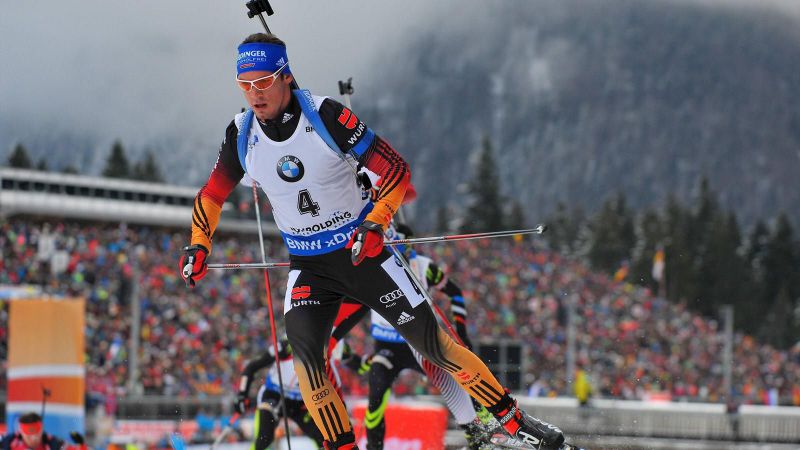 Rasen-Antholz. Photo source: eurosport.ru.
Rasen-Antholz. Photo source: eurosport.ru.
Summer holidays in the Alps
The resorts are busy during the warm season. More than 50 species of wild orchids blossom in the mountain meadows in the spring! Just imagine this raving diversity of colors and scents.
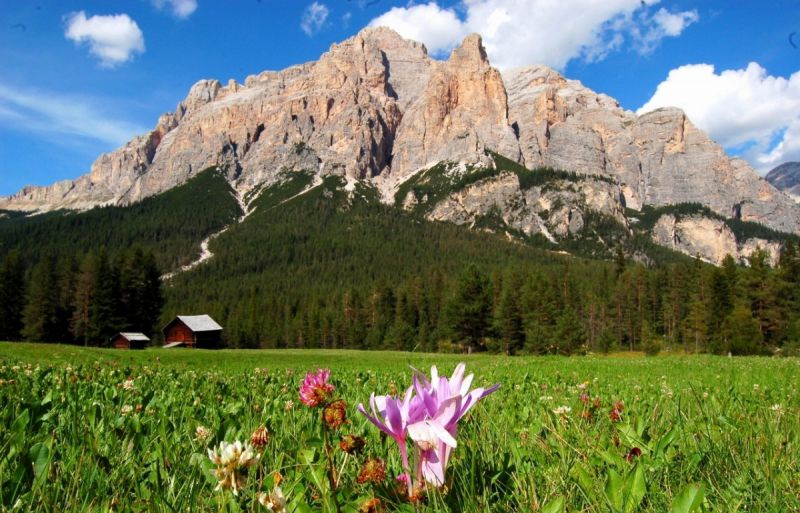 Photo source: newpix.ru.
Photo source: newpix.ru.
Here are the things you can do in the Dolomites in the summer:
- Spend time hunting butterflies.
- Go to the mountain rivers and lakes for fishing. Despite the severity of European laws and seemingly continuous restrictions and prohibitions, it is possible to catch fish in local water bodies not only for brown bears but also for tourists. Although, you will still need to pay for it. You can also just enjoy a ride by boat or catamaran on crystal clear water surface.
- Conquer the mountain river canyons, or simply – to engage in canyoning.
- Fly up to the sky on the paraglider.
- Take a bike ride through forest and meadow paths.
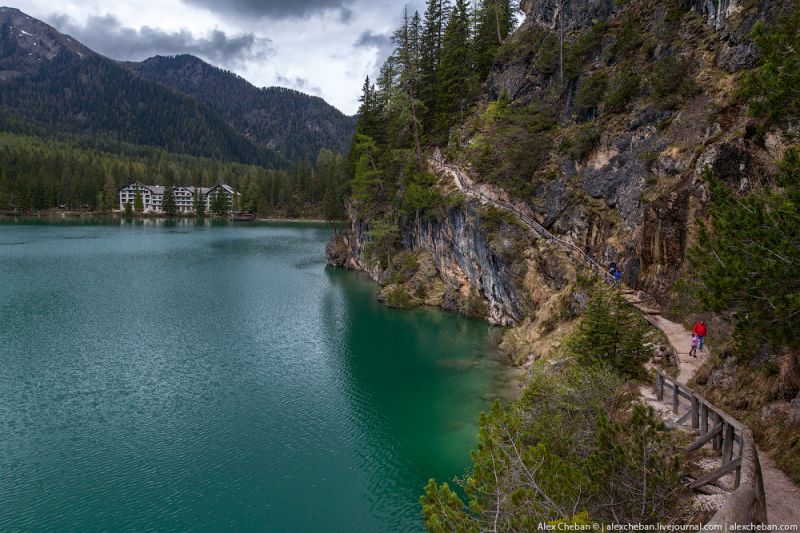 The Pragser Wildsee in the Dolomites. Photo: Alex Cheban.
The Pragser Wildsee in the Dolomites. Photo: Alex Cheban.
- Organize a picnic.
- Visit the Dolomiti Bellunesi National Park. This place is created by nature and is slightly modified by a man for those who wish to cross "mountains, rivers, and valleys", breathe in a coniferous aroma, look into crystal clear lakes, and maybe encounter some of the members of the local fauna.
- Go in for climbing, mountaineering.
- Take horse riding lessons in Urtijëi.
- Watch the 120-km bike race called Dolomiti Superbike that takes place on mountain roads or a bike marathon (Maratona dles Dolomites).
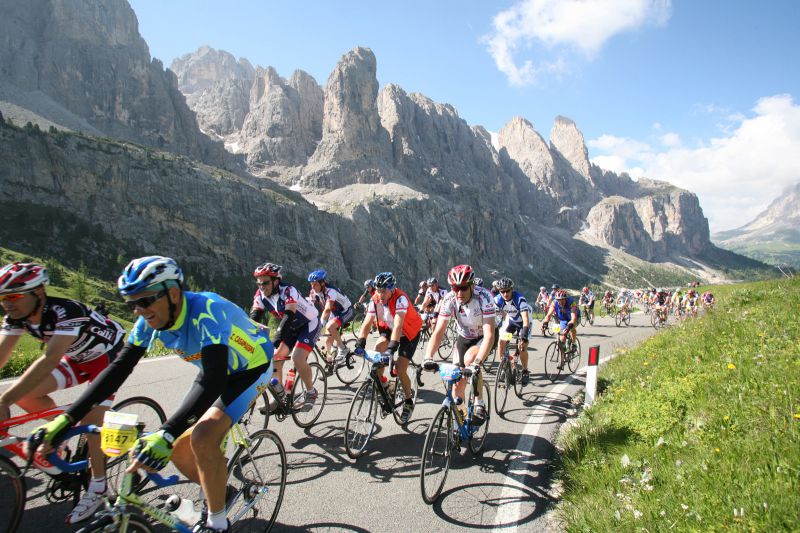 Photo source: Maratona dles Dolomites Committee Photographer.
Photo source: Maratona dles Dolomites Committee Photographer.
- Ski. Yep, ski once again. You can slide down the Dolomites slopes even in the summer – glaciers of Marmolada do not melt.
Recreation at the Dolomites at any time of year
Soft snowy winter, flowering spring, bright summer, and colorful autumn ... And all this is covered in beams of the generous Italian sun. A trip to the Alps is good in any season, and not only for the ski slopes or forest trails. IGotoWorld gathered some information on how to diversify your leisure time in the Dolomites.
Admire the sunset
This is a spectacular sight, which is arranged by nature for free for almost every evening (except for those few days when the Alps are overcast.) It's really fantastic. If you ever looked at the photos of the Dolomites during sunset and thought that this is photoshop – discard it right away: the stone cliffs are this wonderful in real life. The tops of the mountains turn in yellow in the rays of the setting sun, then darken and light up in orange color. Then these bright fiery tops turn red and, as the sun goes lower, they change their color to dense purple and "disappear", merging with the dark sky.
Festivals
"Sounds of the Dolomites" is a festival that will please those who love good music performed by famous world musicians. However, this is not the only thing it can offer. The event is also attended by famous actors who recite the classical literature to the audience.
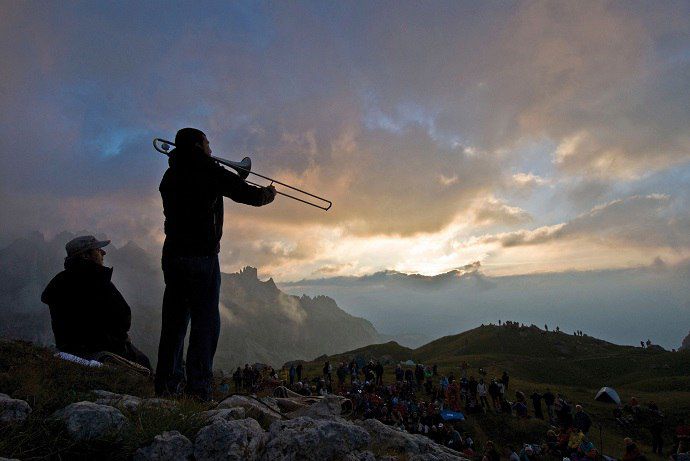 Photo source: gfhome.ru.
Photo source: gfhome.ru.
Museums, castles, and other architectural antiquities
There are a lot of old churches, castles, and houses which have been standing in the towns and villages of the Dolomites for several hundred years.
If you want to find out more about the First World War, an open-air museum on Mount Lagachsoi is the place. It has a tunnel system where explosives were supposed to be planted; entire military towns. During the digging of one of the tunnels, a mine explosion of enormous destructive force occurred, and its after-effects are still visible today.
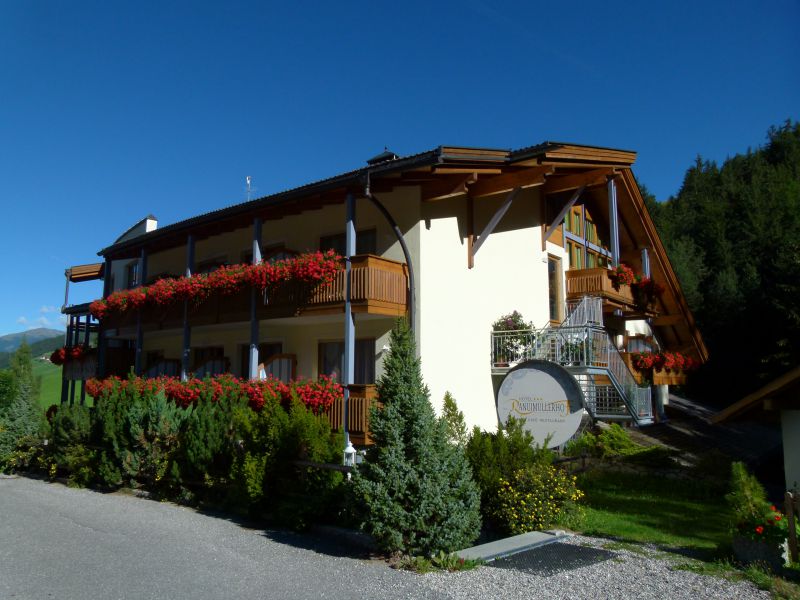 Photo: IGotoWorld Photo Group.
Photo: IGotoWorld Photo Group.
The so-called Underground Archaeological Space of Sas in Trento (Tridentum) offers to discover the history of more ancient times, in particular, the Roman Empire. This is an ancient Roman city that whose part of the city wall, a section of paved road, houses decorated with mosaic, courtyards and artisan workshops can be found today.
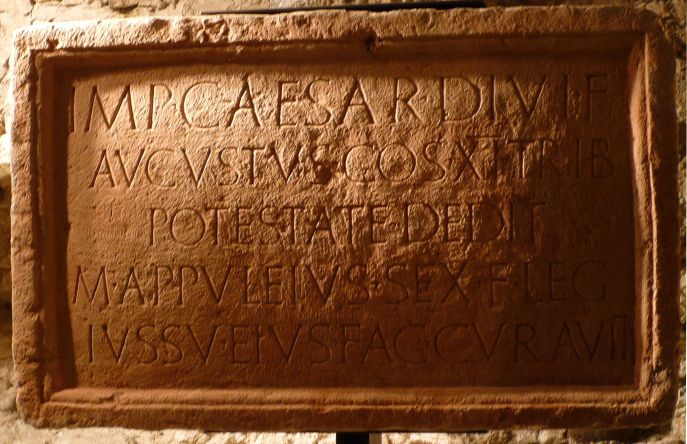 Photo source: travel.rambler.ru.
Photo source: travel.rambler.ru.
In Predazzo there is the Ethnography and Geology Museum.
You can also discover the history and culture of one of the indigenous peoples of the Dolomites in the Museum Ladin (San Martino, Alta Badia Valley). The Museum of the Customs and Traditions of the People of Trentino will tell you about the lifestyle of other local residents.
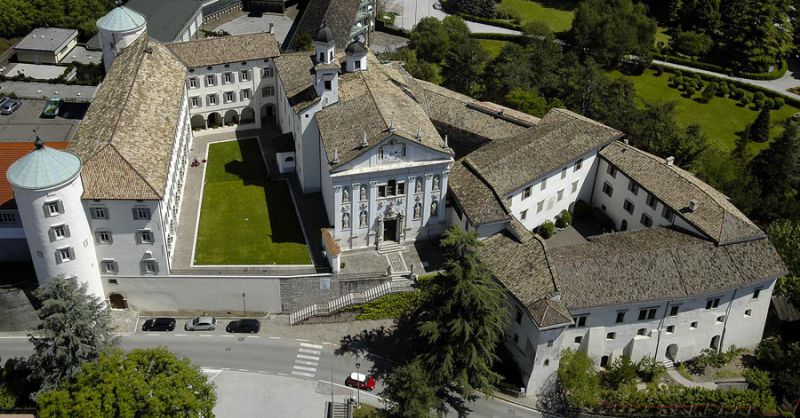 Photo source: forum.awd.ru.
Photo source: forum.awd.ru.
How were dairy products produced by the inhabitants of the Alps throughout the centuries? If you find it interesting, then visit the Museum of the Alpine Pasture Hut. The museum is located in the stables of Palazzo Lodron Bertelli and consists of three halls: the first is devoted to pastures, the second – to milk production, the third – to the life of local residents. Speaking of Palazzo, it is situated nearby. The fancy interiors of the palace with a grand staircase, skillfully done stucco and woodcarving stand in a strong contrast with the simple decoration of peasant houses which can be seen in the museum.
Interested in contemporary art? The Italians also foresaw this. Three branches of the Museum of Modern Art, one in Trento (Torre Vanga) and two in Rovereto (the main museum building and the House of Futuristic Art) are waiting for you.
Those who love mysticism should definitely visit the Castello di Stenico. According to popular beliefs, the souls of former prisoners are wandering around here, in the Tower of Hunger. If you want to see them or at least to hear them, choose a guided tour during full moon night. If you just like castles, then you will enjoy a walk through the grounds of Castel Thun and Castel Beseno. And, of course, you cannot ignore the famous Andraz Castle. It was built in the 11th century for the defense of the Venetian lands, and today it is one of the architectural symbols of the Dolomites.
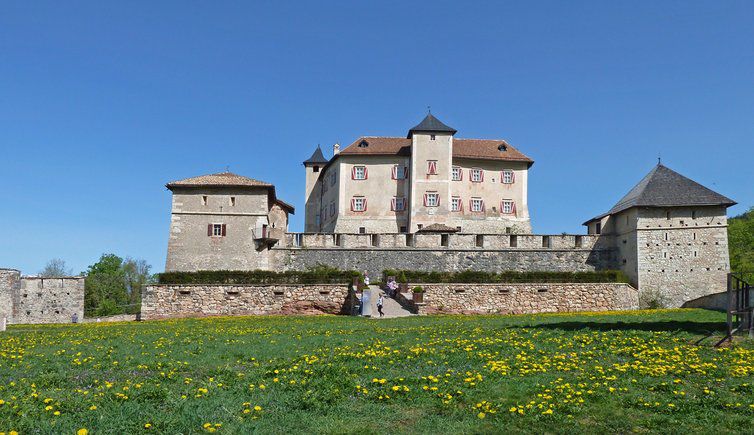 Castel Thun. Photo source: tr3ntino.it.
Castel Thun. Photo source: tr3ntino.it.
We recommend you to take a walk through the streets of the province of Belluno those if you love old Italian architecture:
- Palazzo dei Rettori. This is the building of the 15th–16th century where the rulers of Belluno used to live. Today this place houses a city hall.
- Palazzo Crepadona. This is the 16th-century building which serves as the city library where not only rare books can be found, but also frescoes from the 14th–16th centuries; art exhibitions and meetings with interesting people are also held here.
- Belluno Auditorium. The Episcopal Castle was built in the 12th century. According to the name, the building was meant for bishops.
- Palazzo dei Giuristi. In the Palace of Lawyers (19th century) possesses collections of archaeological antiquities that date back to the Roman times, frescos, art paintings and even an exhibition of interesting paleontological objects.
- Those who enjoy sacral architecture should pay a visit to the church of Santa Maria dei Batutti (15th century), Santo Stefano (15th century), San Rocco (16th century), San Martino (16th–17th century), San Pietro (18th century).
- Palazzo Rosso. The Red Palace is an interesting symbiosis of buildings of the 19th and 13th centuries. The palace was built in 1838. Its construction began near the ruins of the 13th-century town hall so that later it could be connected with each other.
- Palazzo Piloni. The building dates back to the 16th century. At the beginning of the 20th century, the interior was completely modified, but the frescos of Titian’s cousin miraculously survived. They can be found in one of the rooms on the ground floor.
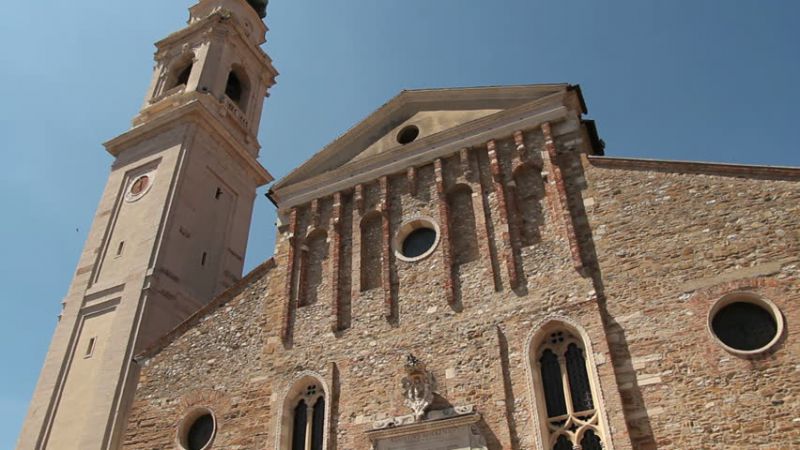 Photo source: stock-clip.com.
Photo source: stock-clip.com.
Taking a walk to cities nearby
There is Venice situated near the resorts of the Dolomites. Why not take advantage of this and visit the legendary City of Water?
Verona lies not far from the mountains. This is the city where the famous Shakespearean lovers, Romeo and Juliet, lived.
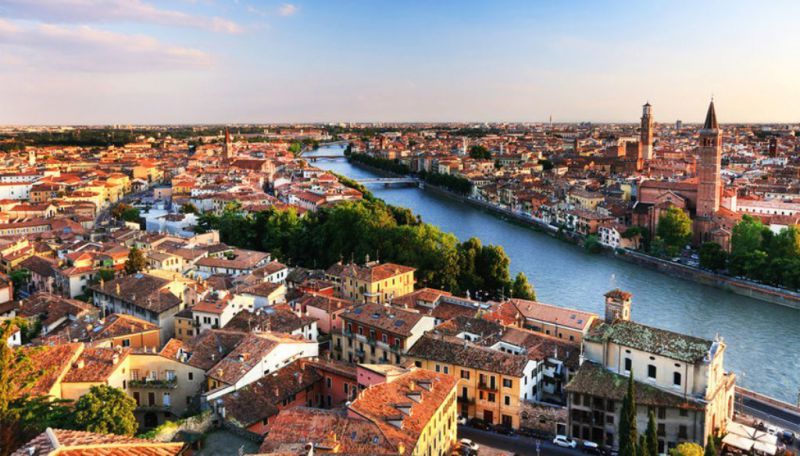 Verona. Photo source: guides.tonkosti.ru.
Verona. Photo source: guides.tonkosti.ru.
SPA and health
The Dolomites air itself is a wonderful medicine for both the body and the soul. However, if you want to strengthen its influence, then go to Peio – this is the focus of various SPA-centers and local mineral waters contribute to this. You can also improve health in the thermal springs in the Levico Terme town. The healing properties of the local iron-arsenic water are officially recognized as medicine. In the wellness centers of Bormio, you will find relaxation rooms, mud baths, whirlpool baths, and Roman baths.
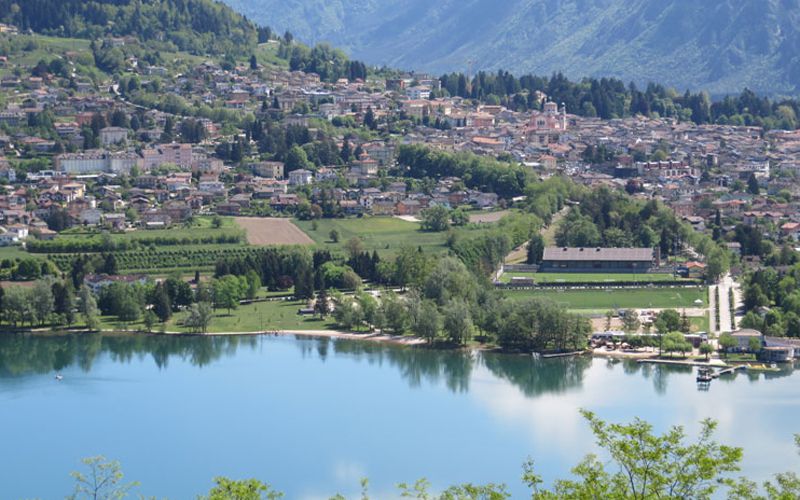 Photo source: busandcoach.com.
Photo source: busandcoach.com.
Gastronomy
On the Santa Croce mountain (in the Pedraces village of Alta Badia region) there is an unusual tavern. It is unusual because it is housed in an ancient 15th-century church. Here you can taste local delicacies. Very tasty mulled wine will be very convenient in winter. Sweet tooths can enjoy the choice of delicious sweets at any time of the year.
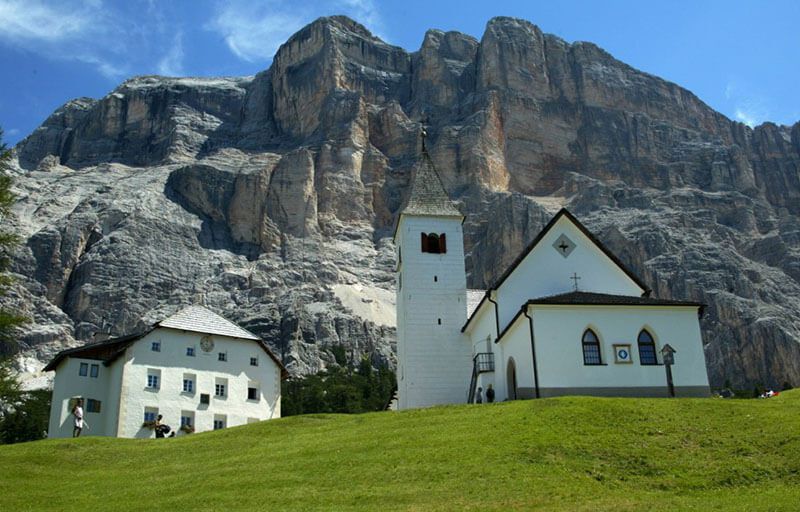 Photo source: garnicristin.com.
Photo source: garnicristin.com.
On the farm Malga Filippon, you can enjoy not only tasty and healthy food (in a local restaurant), but also play golf, and visit a small botanical garden.
Cheese lovers should go to the Malga Ciauta Agritourist Farm. Here you can taste and, of course, buy such delicacies as mountain cheese – Zigher and Spersala.
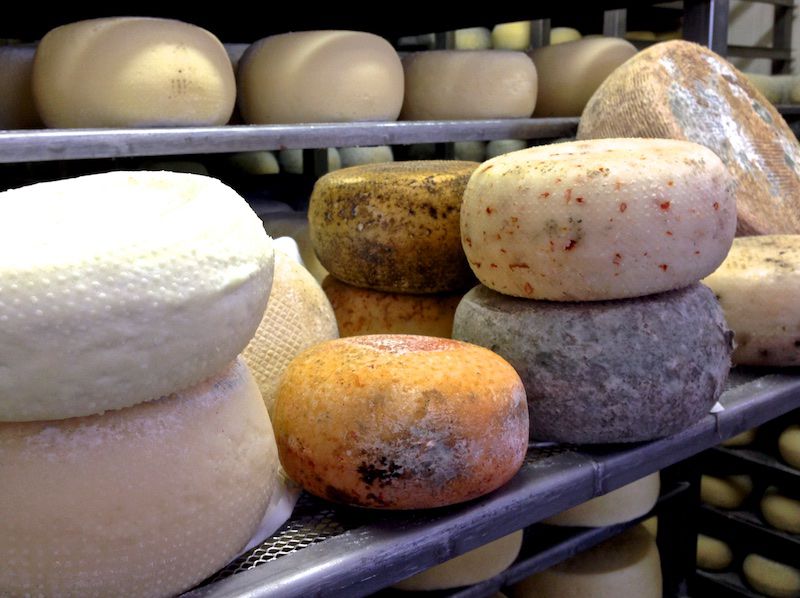 Photo source: ru-italia.livejournal.com.
Photo source: ru-italia.livejournal.com.
As a conclusion to the article I would like to wish you a pleasant stay, but in the case of the Dolomites, this wishing is just unnecessary as it is quite impossible to leave this place displeased.



